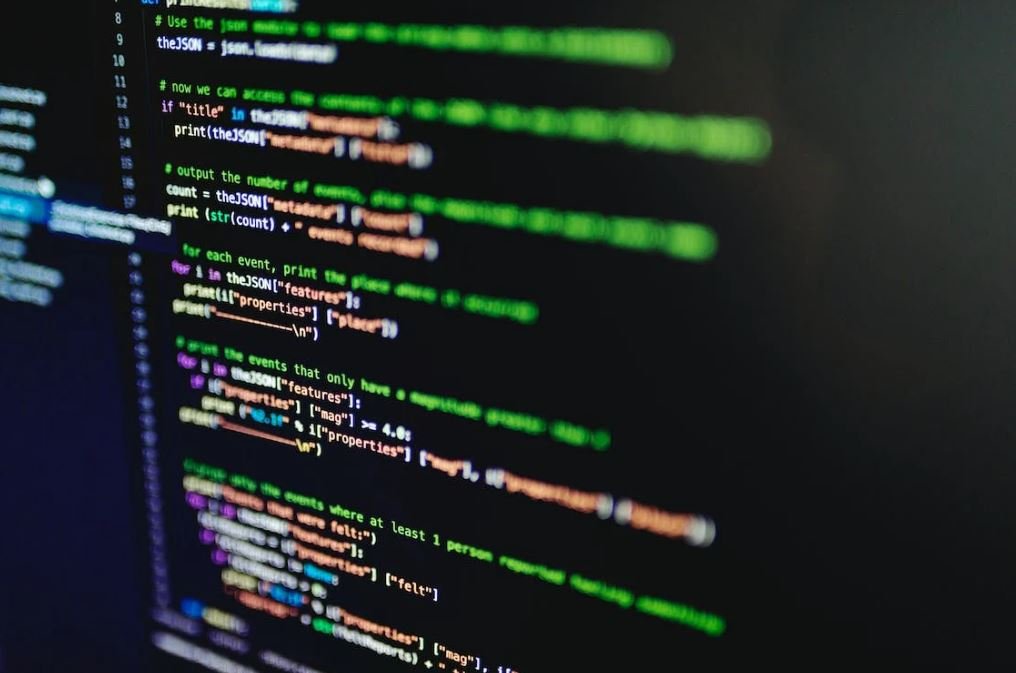Input Data Explained
When working with computers and programming languages, input data plays a crucial role in providing the necessary information for algorithms to process. Understanding input data is important in order to ensure the proper functioning of software applications and the accuracy of their results. In this article, we will delve into the concept of input data, its various types, and how it is used in programming.
Key Takeaways:
- Input data is essential for algorithms to process and provide accurate results.
- There are different types of input data, such as text, numerical values, and multimedia content.
- Understanding the structure and format of input data is crucial for successful programming.
What is Input Data?
Input data refers to any information that is provided to a computer program or system for processing. It can take various forms, such as text, numbers, images, audio, and video. Input data is the raw material that algorithms and programs rely on to produce meaningful output or perform specific tasks.
Imagine you have a simple calculator application on your computer, and you want to add two numbers together. In this scenario, the two numbers you input into the calculator are the input data. The calculator’s algorithm processes this data and produces the desired sum as output.
*Understanding the structure and format of input data is crucial for successful programming.*
Types of Input Data
Input data can be broadly categorized into three main types:
- Text: This includes any form of textual information, such as words, sentences, paragraphs, or even entire documents. Text input data is commonly used in word processing, search engines, and natural language processing applications.
- Numerical Values: Numeric input data consists of quantitative information, including integers, decimals, and floating-point numbers. It is widely used in mathematical calculations, financial applications, and scientific simulations.
- Multimedia: This type of input data encompasses various forms of media content, such as images, audio, and video files. Multimedia input data finds application in areas like image and video processing, audio recognition, and multimedia editing tools.
Input data can take many forms, but it is crucial to consider the appropriate type of data for each programming task.
Importance of Input Data in Programming
Accurate and well-structured input data is paramount for achieving the desired outcomes in programming. Here are a few reasons why understanding input data is crucial:
- Input data determines the behavior of algorithms and program logic.
- Incorrect or malformed input data can lead to incorrect results or program failures.
- Input data validation ensures the reliability and security of software applications.
- Understanding the format and structure of input data enables effective data processing and manipulation.
- Real-world data analysis heavily relies on accurate input data to generate meaningful insights.
Accurate input data is the foundation for accurate results and reliable software applications.
Data Tables
Here are three tables showcasing some interesting data points related to input data:
| Programming Language | Primary Input Data Types |
|---|---|
| Python | Text, Numerical Values |
| Java | Text, Numerical Values |
| Ruby | Text, Numerical Values, Multimedia |
| Application | Text Input Data |
|---|---|
| Word Processor | Document, Paragraph, Sentence |
| Search Engine | User Query, Search Keywords |
| Application | Numerical Input Data |
|---|---|
| Calculator | Integers, Decimals, Floating-Point Numbers |
| Stock Market Analysis | Stock Prices, Market Indices |
Conclusion
In conclusion, understanding input data is crucial for successful programming. Input data provides the necessary information for algorithms to process and produce accurate results. By comprehending the different types of input data, their structure, and significance in programming, developers can create reliable and effective software applications.

Common Misconceptions
Paragraph 1: Input Data
One common misconception people have about input data is that it is always reliable and accurate. However, this is not always the case. Often, data can be flawed or incomplete, leading to incorrect analysis and decision-making.
- Data inputs are always reliable and accurate
- Data is always complete and comprehensive
- Data inputs do not require verification or cleaning
Paragraph 2: Explain
Another misconception is that explanation is not necessary when presenting data. Some believe that the data will speak for itself and that it is unnecessary to provide context or background information. However, without proper explanation, data can be easily misinterpreted or misunderstood.
- Data can be easily understood without any explanation
- Background information is irrelevant when presenting data
- Explanation is only needed for complex data sets
Paragraph 3: Title
Many people have the misconception that data can be manipulated to support any argument or desired outcome. While it is true that data can be interpreted in different ways, manipulating data to fit a specific agenda undermines its integrity and misleads others.
- Data can be easily manipulated to support any argument
- Data manipulation does not impact the accuracy of the analysis
- Data manipulation is acceptable as long as it supports the desired outcome
Paragraph 4: Title
Some individuals mistakenly believe that collecting more data will always lead to better insights and decision-making. However, collecting excessive amounts of data without a clear purpose or understanding of how to analyze it can be counterproductive.
- More data equals better insights and decision-making
- Collecting excessive data is always beneficial
- Data quality is not as important as data quantity
Paragraph 5: Title
Finally, there is a misconception that data analysis is a straightforward process that always leads to clear-cut conclusions. In reality, data analysis involves complex methodologies, variations in interpretation, and often requires professional expertise to ensure accurate results.
- Data analysis always leads to clear-cut conclusions
- Data analysis is a simple and straightforward process
- Data analysis does not require specialized skills or knowledge

Global Population by Continent
The table below displays the estimated population of each continent as of 2021. The figures represent both the total population and the percentage of the world’s population that each continent represents.
| Continent | Total Population | Percentage of World Population |
|---|---|---|
| Africa | 1,345,937,000 | 16.87% |
| Asia | 4,641,054,775 | 58.26% |
| Europe | 747,636,026 | 9.38% |
| North America | 592,072,212 | 7.43% |
| South America | 435,005,102 | 5.46% |
| Oceania | 43,148,682 | 0.54% |
| Antarctica | 1,000 | 0.00001% |
World’s Tallest Buildings
Here are some of the tallest buildings in the world along with their respective heights in meters:
| Building Name | Height (m) |
|---|---|
| Burj Khalifa (Dubai, UAE) | 828 |
| Shanghai Tower (Shanghai, China) | 632 |
| Abraj Al-Bait Clock Tower (Mecca, Saudi Arabia) | 601 |
| One World Trade Center (New York City, USA) | 541 |
| Taipei 101 (Taipei, Taiwan) | 508 |
Top 5 Countries with the Highest Life Expectancy
Life expectancy is a key indicator of overall health and well-being. The table below presents the top five countries with the highest life expectancy:
| Country | Life Expectancy (years) |
|---|---|
| Japan | 84.6 |
| Hong Kong | 84.1 |
| Switzerland | 83.8 |
| Singapore | 83.6 |
| Australia | 83.4 |
Olympic Medal Distribution by Country (All Time)
The table below showcases the top five countries with the highest number of Olympic medals won throughout history:
| Country | Gold Medals | Silver Medals | Bronze Medals | Total Medals |
|---|---|---|---|---|
| United States | 1,071 | 894 | 818 | 2,783 |
| Soviet Union | 395 | 319 | 296 | 1,010 |
| Germany | 283 | 282 | 290 | 855 |
| Great Britain | 263 | 295 | 293 | 851 |
| China | 224 | 167 | 155 | 546 |
Top 5 Most Spoken Languages in the World
Languages play a vital role in global communication. The following table highlights the top five most spoken languages worldwide:
| Language | Number of Speakers (millions) |
|---|---|
| Chinese (Mandarin) | 1,311 |
| Spanish | 460 |
| English | 379 |
| Hindi | 341 |
| Arabic | 315 |
Global Internet Users by Region
The expansion of the internet has revolutionized the way we communicate and access information. The table below presents the number of internet users by region:
| Region | Number of Internet Users (millions) |
|---|---|
| Asia | 2,766 |
| Europe | 727 |
| Americas | 768 |
| Africa | 625 |
| Oceania | 48 |
Top 5 Largest Economies by GDP
Gross Domestic Product (GDP) is a crucial indicator of a country’s economic strength. The table below lists the world’s top five largest economies based on their GDP:
| Country | GDP (trillions of US dollars) |
|---|---|
| United States | 22.68 |
| China | 16.64 |
| Japan | 5.38 |
| Germany | 4.44 |
| United Kingdom | 3.12 |
Global CO2 Emissions by Country
Carbon dioxide (CO2) emissions contribute to climate change. The following table presents the top five countries with the highest CO2 emissions:
| Country | CO2 Emissions (million metric tons) |
|---|---|
| China | 10,064 |
| United States | 5,416 |
| India | 2,654 |
| Russia | 1,711 |
| Japan | 1,162 |
World’s Largest Deserts
Deserts are fascinating geographical features. The table below presents the world’s largest deserts ranked by their total area:
| Desert | Location | Total Area (square kilometers) |
|---|---|---|
| Antarctic Desert | Antarctica | 14,000,000 |
| Sahara Desert | Africa | 9,200,000 |
| Arabian Desert | Middle East | 2,330,000 |
| Gobi Desert | Asia | 1,300,000 |
| Patagonian Desert | South America | 670,000 |
Conclusion:
Input Data Explain provided a fascinating compilation of data from diverse fields. Through tables highlighting global population, tall buildings, life expectancy, Olympic medals, languages, internet usage, economies, CO2 emissions, and deserts, it becomes evident that our world is characterized by remarkable diversity and interconnectedness. These tables shed light on various aspects of human existence and provide insights into the distribution of people, resources, achievements, and challenges. The data presented supports a greater understanding of our world’s demographics, achievements, and global concerns. As we continue to explore and analyze such data, we can make informed decisions and strive for a more balanced and sustainable future.
Frequently Asked Questions
What is Data Input?
Data input refers to the process of entering or submitting data into a computer system or software for processing, storage, or analysis. It involves providing information or commands through various input devices such as keyboards, mice, scanners, or sensors.
Why is Data Input important?
Data input is critical for any computer system or software to function effectively. It enables the system to receive and process the necessary information, which can be used for decision-making, analysis, storage, or retrieval of data. Without accurate and timely data input, the system’s output and overall performance may suffer.
What are some common methods of Data Input?
There are several common methods of data input, including:
- Keyboard input: manually entering data using a keyboard.
- Mouse input: using a pointing device to click or select options.
- Scanning: using scanners or barcode readers to capture data.
- Voice input: using voice recognition technology to input data.
- Touch input: using touchscreens or touch-sensitive devices to input data.
What is the role of Data Validation in Data Input?
Data validation is the process of ensuring that the data entered into a system or software is accurate, complete, and valid. It helps detect and prevent errors or inconsistencies in the data input, improving the quality and reliability of the system’s output.
What are some techniques used for Data Validation?
Some common techniques for data validation include:
- Range checks: verifying if the input falls within expected limits.
- Format checks: ensuring the input follows a specific format (e.g., date format).
- Presence checks: confirming the presence of required data.
- Consistency checks: validating the relationship between different data fields.
- Data type checks: verifying that the input matches the expected data type.
What is the difference between Data Input and Data Output?
Data input refers to the process of entering data into a system, while data output refers to the process of retrieving or presenting data from a system. In simple terms, input is providing information to the system, and output is getting information from the system.
How can I ensure the accuracy of Data Input?
To ensure the accuracy of data input, you can:
- Double-check the entered data for any errors or mistakes.
- Implement data validation techniques to detect and prevent input errors.
- Use automated tools or software with built-in validation features.
- Provide clear instructions and guidelines for data input.
- Conduct regular data quality audits or reviews.
Are there any risks associated with Data Input?
Yes, there are some risks associated with data input, including:
- Input errors leading to inaccurate or unreliable output.
- Data breaches or unauthorized access to sensitive information.
- Loss or corruption of data during the input process.
- Inefficient data input methods leading to time and productivity loss.
- Data input bottlenecks or delays affecting system performance.
What are the best practices for efficient Data Input?
Some best practices for efficient data input include:
- Using keyboard shortcuts or automation tools to speed up data entry.
- Organizing data input forms or screens logically and intuitively.
- Providing autocomplete or dropdown options for frequently used data.
- Training users on proper data input techniques and guidelines.
- Regularly reviewing and optimizing data input processes for efficiency.




